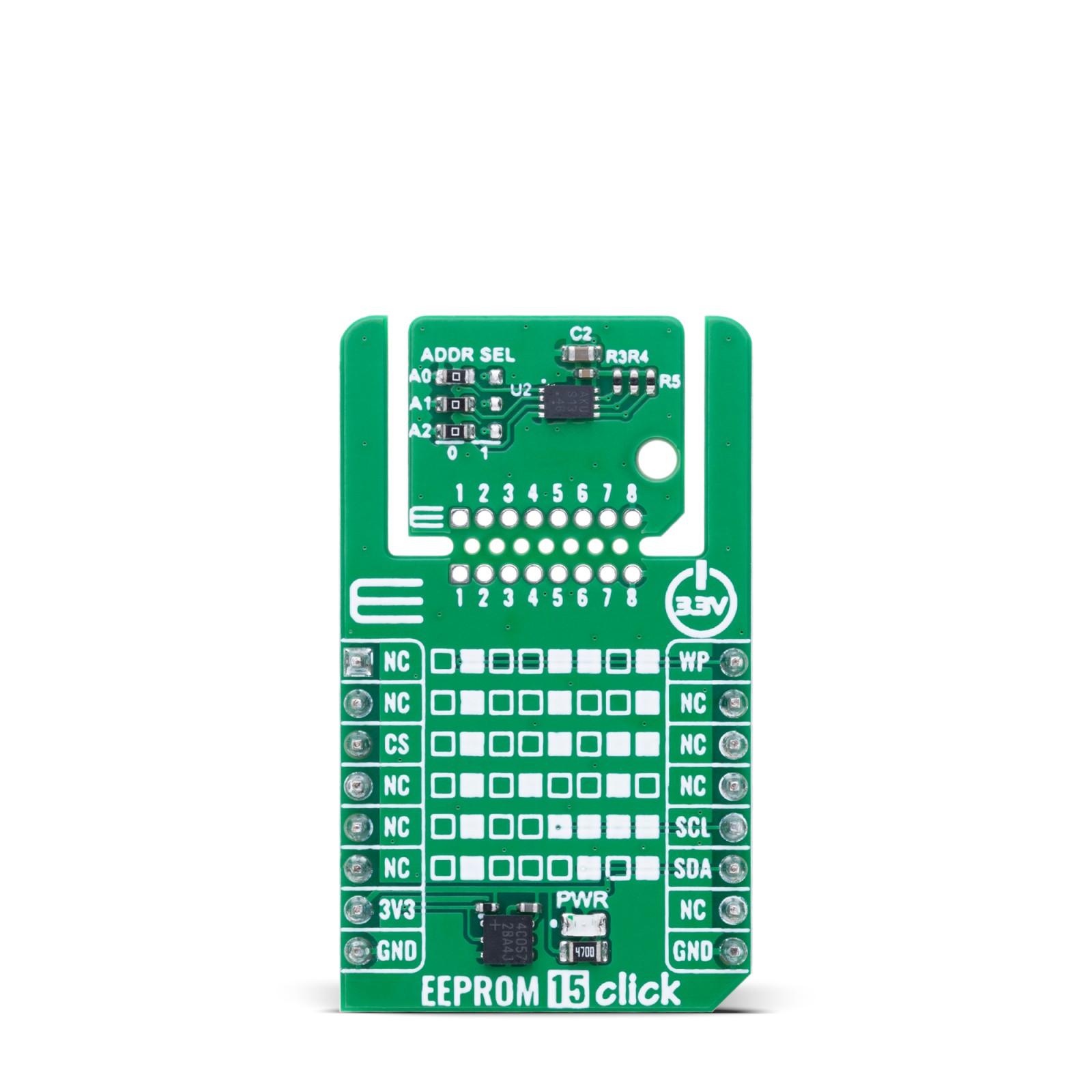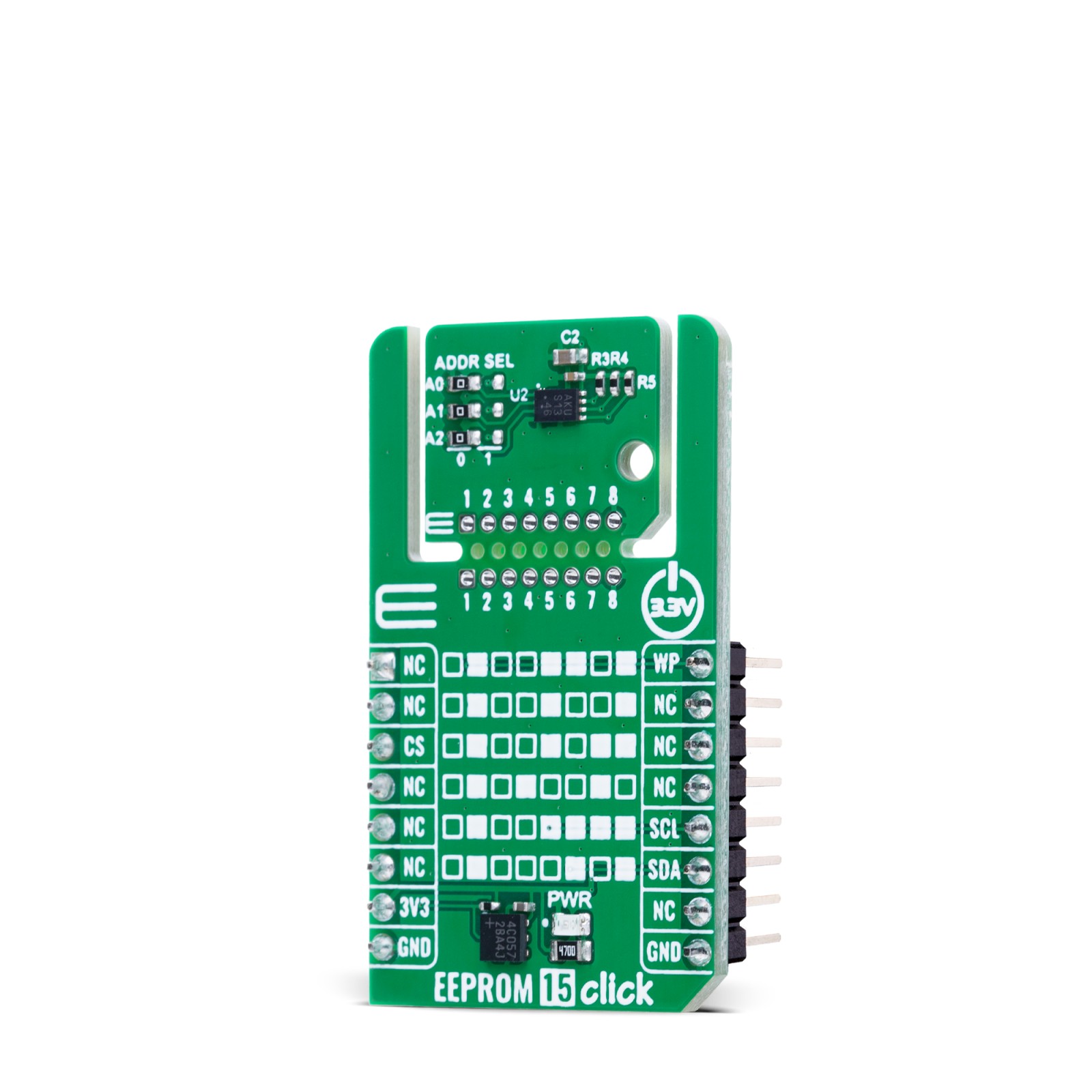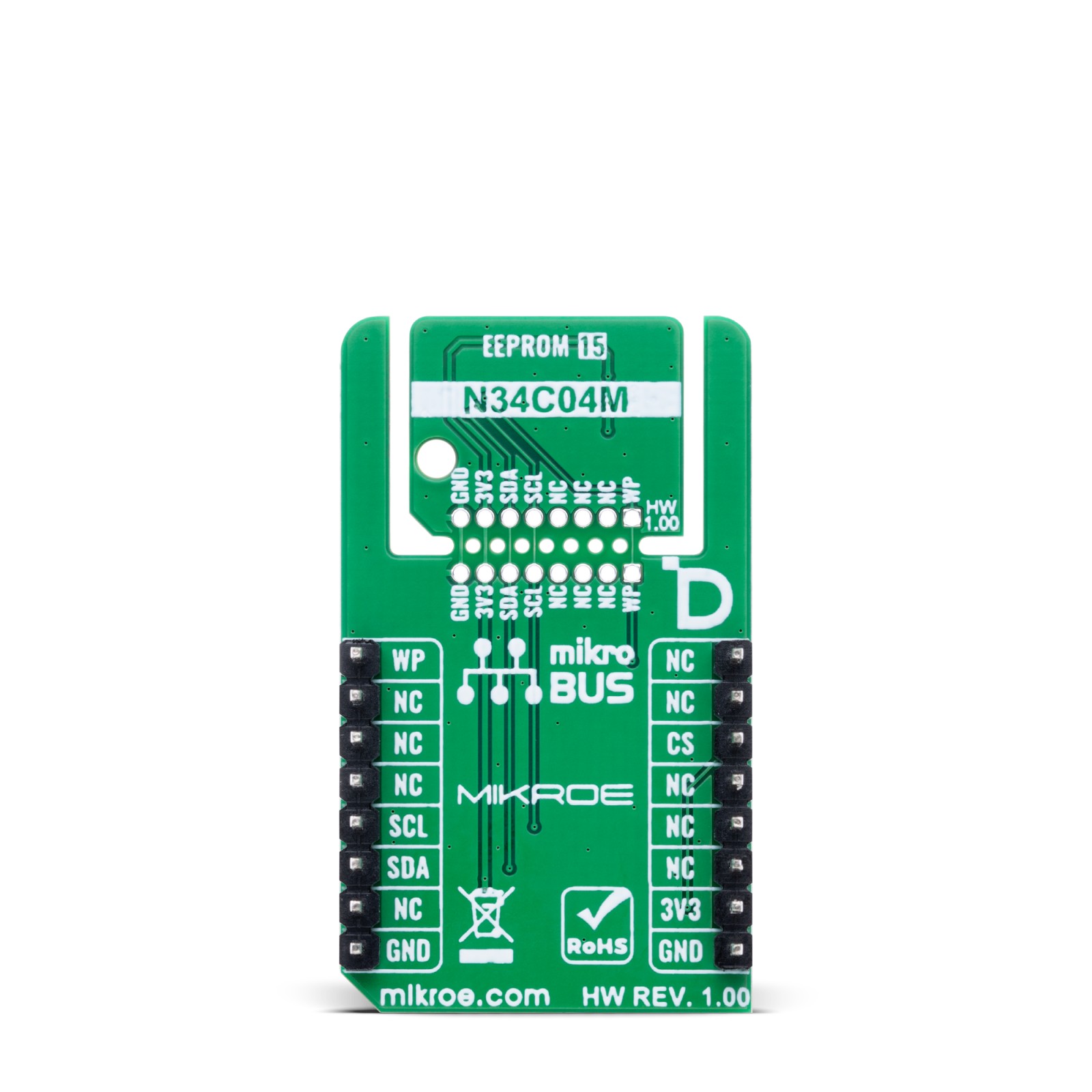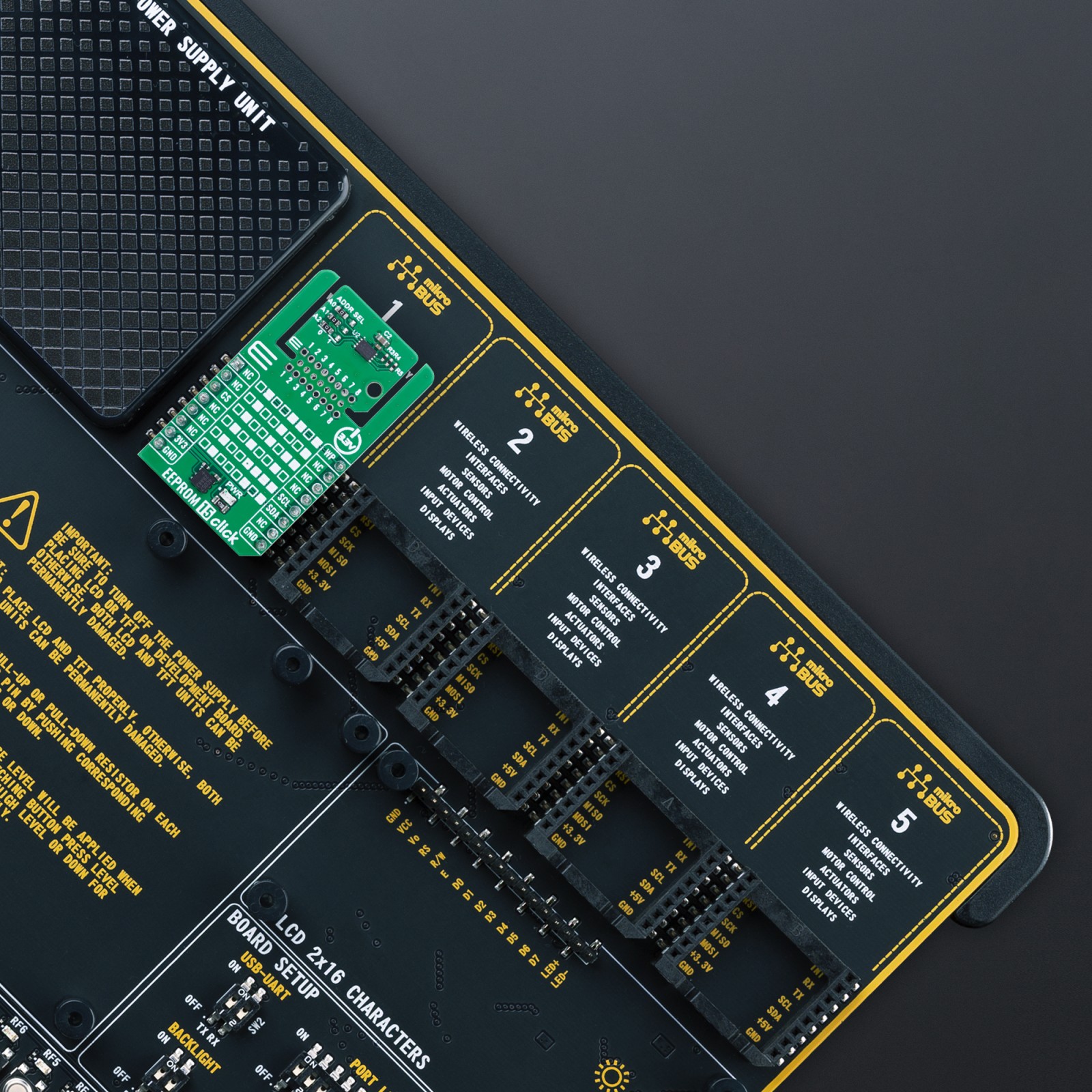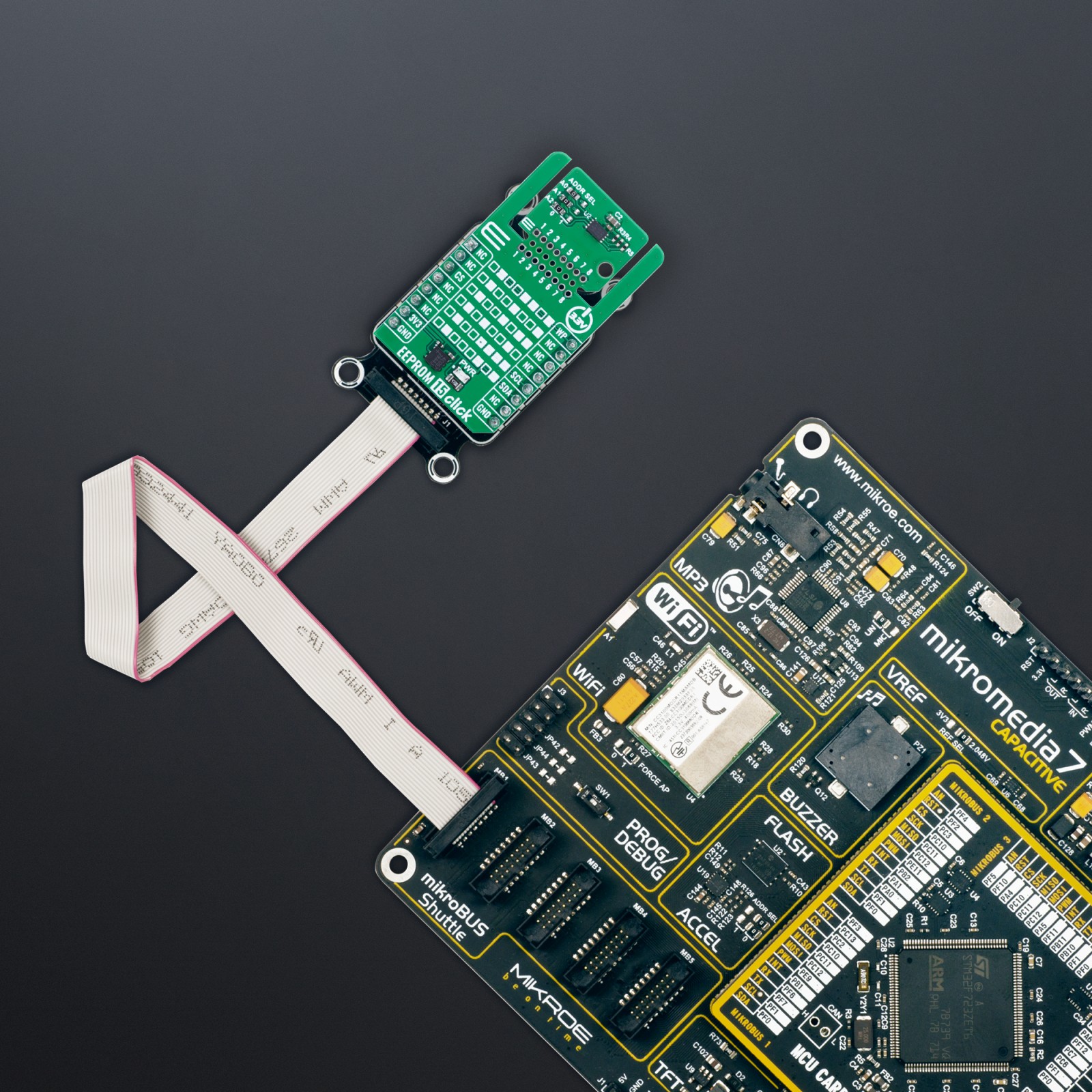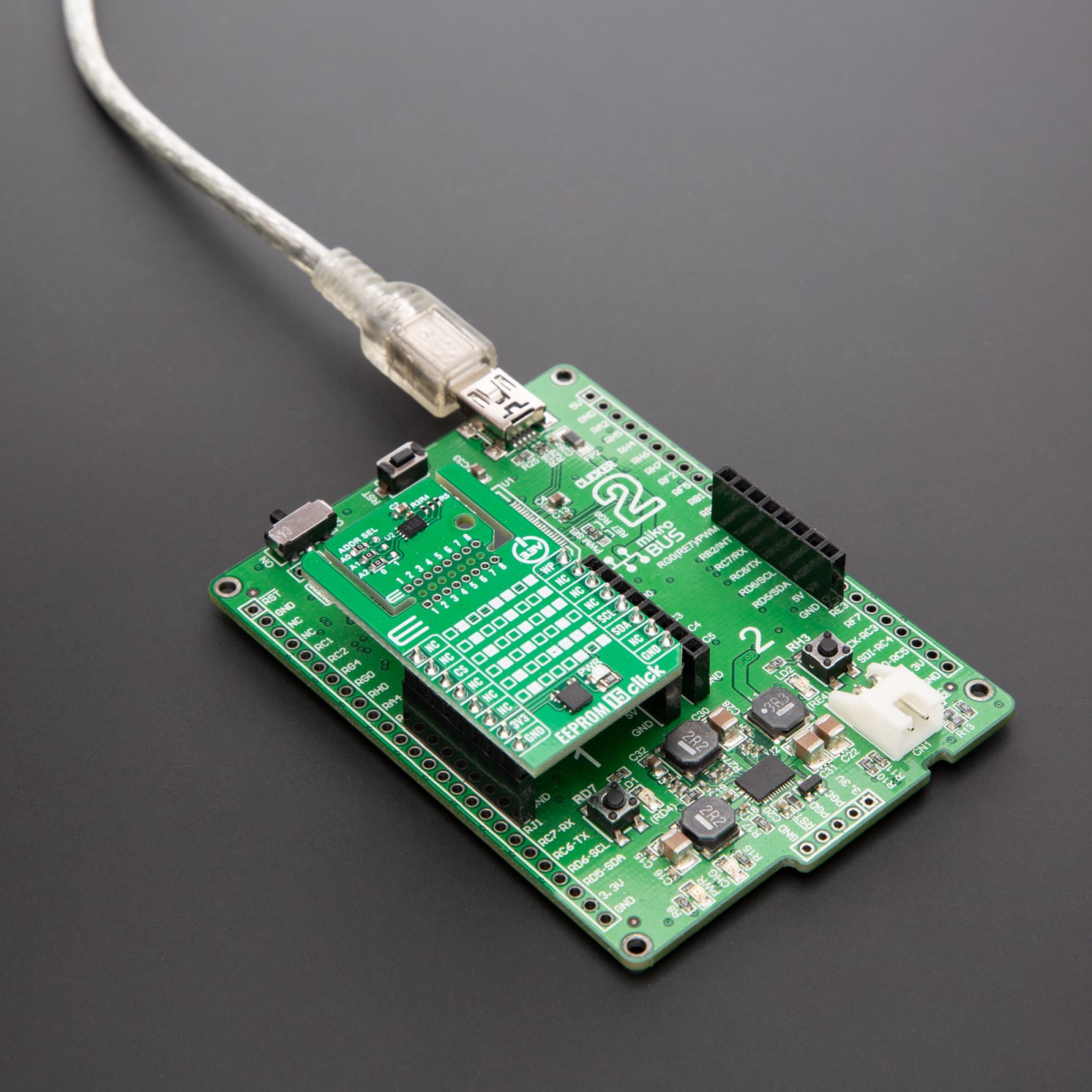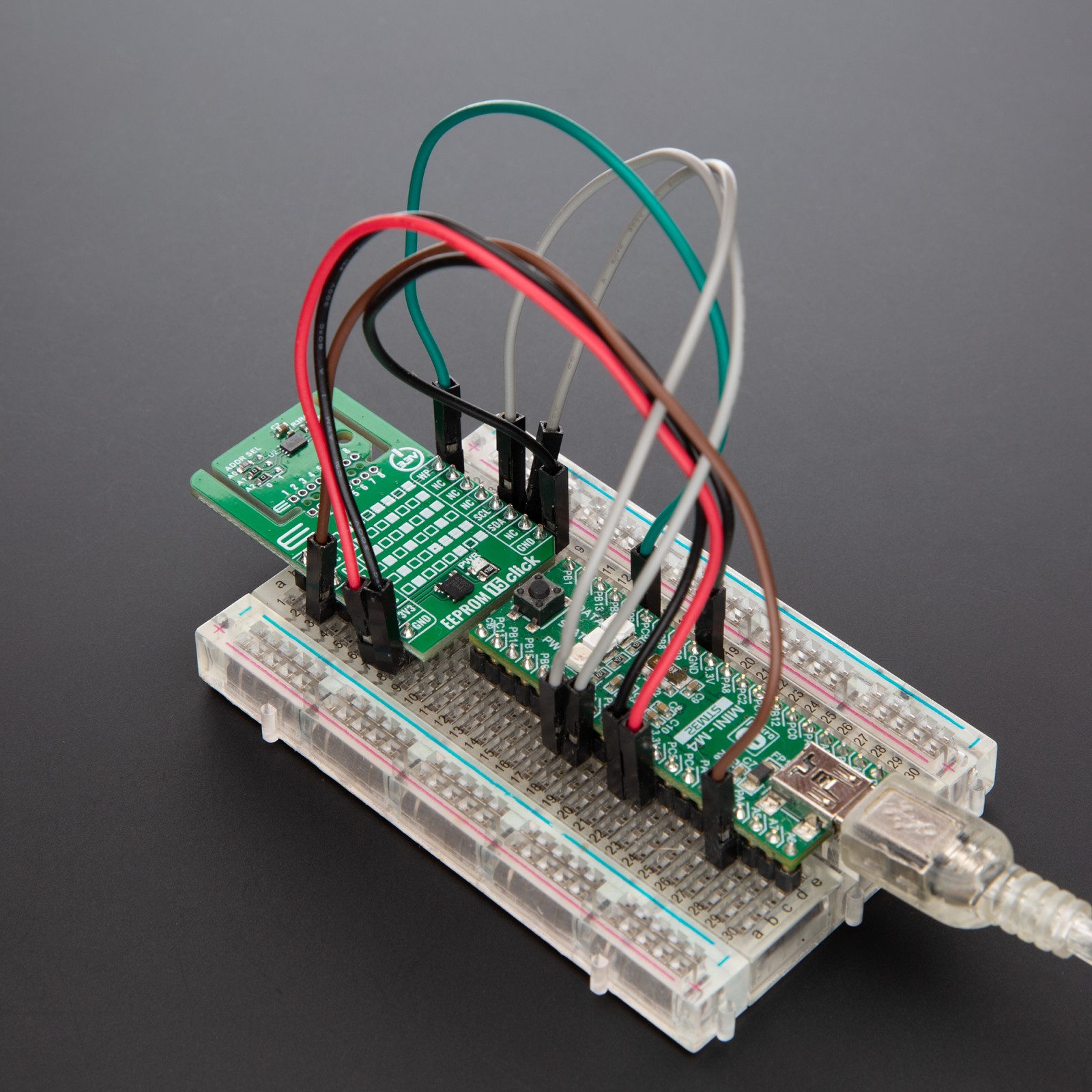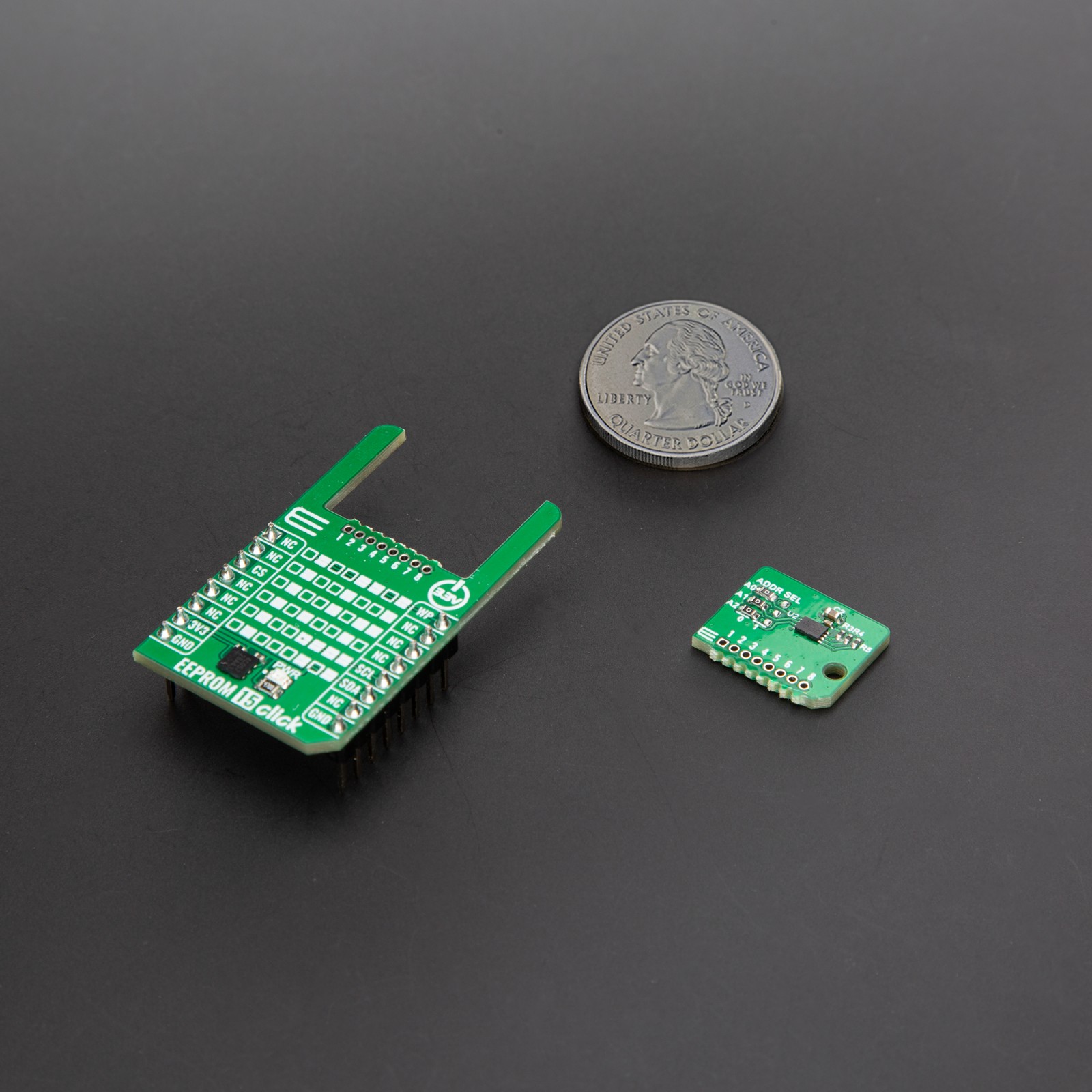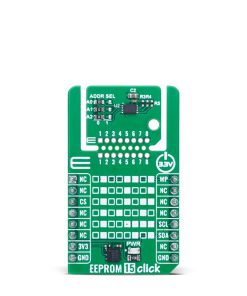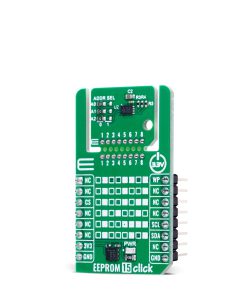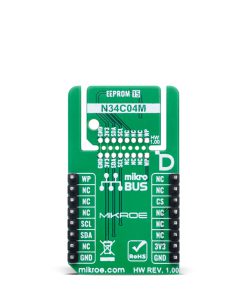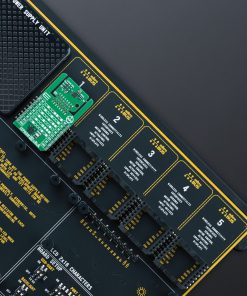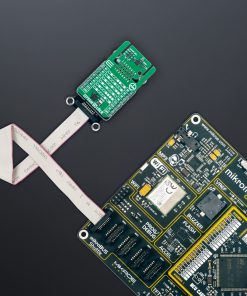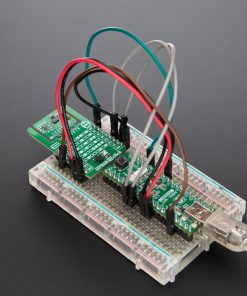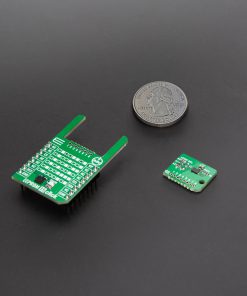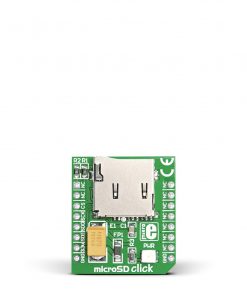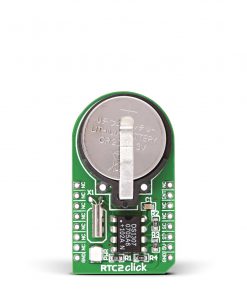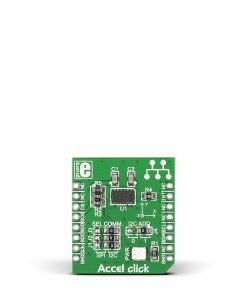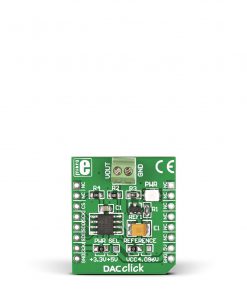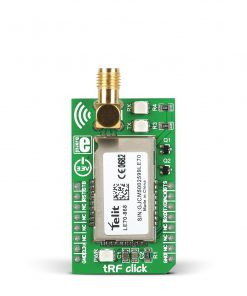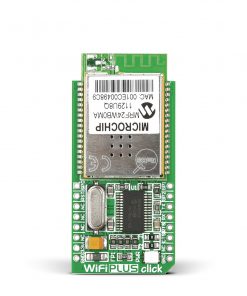EEPROM 15 Click
R165.00 ex. VAT
EEPROM 15 Click is a compact add-on board designed for reliable non-volatile data storage in embedded and computing systems. This board features the N34C04MU3ETG, a 4Kb serial EEPROM from onsemi, fully compliant with the JEDEC JC42.4 (EE1004−v) SPD specification for DDR4 DIMMs. This board supports I2C communication with selectable addresses and speeds up to 1MHz, includes a 16-byte page write buffer, and features a hardware Write Protect pin. Built on low-power CMOS technology, it offers 1 million write cycles and 100 years of data retention, ensuring long-term reliability. Thanks to MIKROE’s innovative Click Snap format, the board allows flexible implementation and standalone operation. It is ideal for applications in computing systems that require robust and efficient EEPROM storage.
EEPROM 15 Click is fully compatible with the mikroBUS™ socket and can be used on any host system supporting the mikroBUS™ standard. It comes with the mikroSDK open-source libraries, offering unparalleled flexibility for evaluation and customization. What sets this Click board™ apart is the groundbreaking ClickID feature, enabling your host system to seamlessly and automatically detect and identify this add-on board, alongside a Click Snap feature introducing a new level of flexibility and ease of use.
Stock: Lead-time applicable.
| 5+ | R156.75 |
| 10+ | R148.50 |
| 15+ | R140.25 |
| 20+ | R134.97 |

